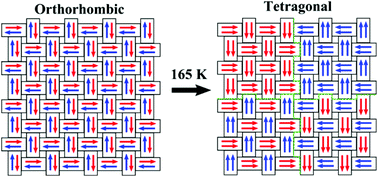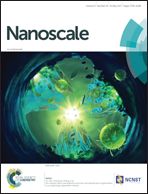Exploring the orthorhombic–tetragonal phase transition in CH3NH3PbI3: the role of atom kinetics†
Abstract
Methylammonium lead tri-iodide is a polymorphic material with two temperature-induced phase transitions at 165 K and 327 K, accompanied by an orthorhombic-to-tetragonal and a tetragonal-to-cubic lattice modification. Understanding the origins of these transitions as well as their implications on the crystal structure of the material is fundamental for its technological optimization. Here, we use the density functional theory along with ab initio molecular dynamics to study the low-temperature phase transition of CH3NH3PbI3. Considering two kinetically robust models for the orthorhombic and the tetragonal phase, we show that the vibrational features of the material can be strongly affected by the orientations of the methylammonium ions. We argue that the orthorhombic–tetragonal transition is characterized by a partial rearrangement of the organic cations that locally relaxes the stress induced by the thermal movement of atoms. We finally propose a macroscopic model for the tetragonal phase that consists of rotated noncentrosymmetric domains, where the methylammonium ions are quasi-two-dimensionally confined around the a–b crystallographic plane.



 Please wait while we load your content...
Please wait while we load your content...